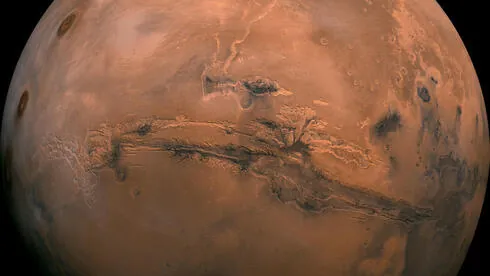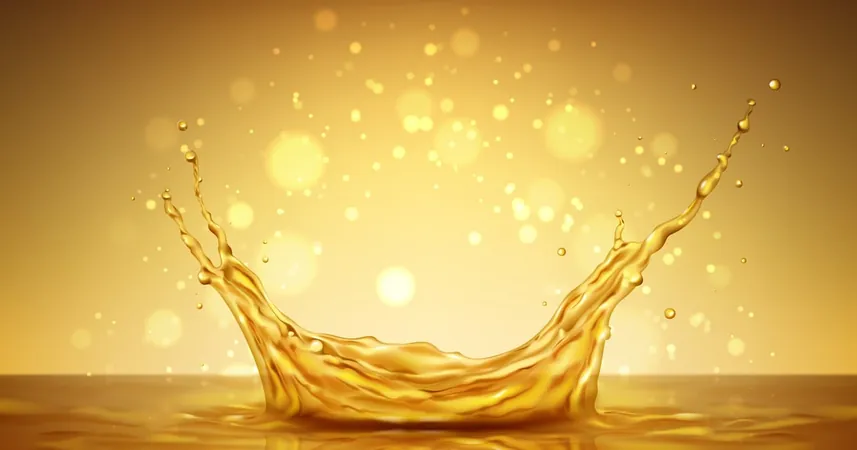
Mars Makes History: First-Ever Aurora Captured in Stunning Detail!
2025-05-29
Author: Li
A Celestial Spectacle on the Red Planet
For years, humans have marveled at the breathtaking auroras illuminating our skies. These dazzling displays of green and purple light occur when charged particles from space collide with Earth's atmosphere. But guess what? Mars just joined the club! Thanks to NASA’s Perseverance rover, scientists have officially captured visible-wavelength auroras on the Red Planet for the very first time.
A Dimming Discovery
While this groundbreaking milestone marks a major achievement in space exploration, the Martian auroras are far less vibrant than Earth's. According to Roger Wiens from Purdue University, the green glow would appear more like a dull shimmer to astronauts. Why the difference? Mars lacks a global magnetic field, which means that charged particles aren’t funneled to specific areas like they are on Earth. Instead, they’re dispersed throughout the sky, resulting in a more muted light show.
Understanding Mars' Unique Atmosphere
The weak auroras observed on Mars stem from interactions between charged particles and oxygen atoms within carbon dioxide molecules. On Earth, nitrogen plays a crucial role, contributing to the brilliant hues we see. Moreover, Perseverance's cameras weren’t designed for low-light conditions, which further dulls the imagery.
A New Frontier for Research
Despite their faint appearance, these Martian auroras open doors to new understandings of the planet's atmospheric behavior. Wiens suggests moving the rover's observations to Martian southern regions, which may yield more vibrant auroras, as that area is known to be more magnetized.
Dusty Mysteries: The Streaks of Mars
Adding intrigue to this Martian saga are mysterious dark streaks along steep slopes—first spotted by NASA’s Viking landers nearly 50 years ago. Originally thought to be seasonal water flows, these streaks sparked speculation about liquid water existing on the surface. However, a recent AI analysis has reshaped that narrative.
Instead of being linked to flowing water, researchers now believe that these streaks are actually caused by dust avalanches! Using an AI model trained on over 86,000 Mars images, scientists discovered that these streaks appear more frequently in windy regions, discrediting earlier theories about liquid water.
A Setback for Space Initiatives
In related space news, SpaceX is facing delays as it awaits FAA approval for its Starship's ninth test flight. Despite hopes for an imminent launch, concerns persist following an explosive failure in the eighth test. On a separate note, India’s ISRO faced disappointment as its latest Earth observation satellite, ESO-09, was lost due to a malfunction during its third-stage launch.
The Quest for Martian Water Continues
The revelation that Mars' streaks are not linked to water remains a letdown for future crewed missions. However, other studies hint at the presence of frozen and possibly liquid water beneath the surface, keeping the dream alive for human exploration.
As we continue to unlock the mysteries of the Red Planet, each discovery pulls us deeper into the enchanting world of space—it’s an exciting time to be a space enthusiast!



 Brasil (PT)
Brasil (PT)
 Canada (EN)
Canada (EN)
 Chile (ES)
Chile (ES)
 Česko (CS)
Česko (CS)
 대한민국 (KO)
대한민국 (KO)
 España (ES)
España (ES)
 France (FR)
France (FR)
 Hong Kong (EN)
Hong Kong (EN)
 Italia (IT)
Italia (IT)
 日本 (JA)
日本 (JA)
 Magyarország (HU)
Magyarország (HU)
 Norge (NO)
Norge (NO)
 Polska (PL)
Polska (PL)
 Schweiz (DE)
Schweiz (DE)
 Singapore (EN)
Singapore (EN)
 Sverige (SV)
Sverige (SV)
 Suomi (FI)
Suomi (FI)
 Türkiye (TR)
Türkiye (TR)
 الإمارات العربية المتحدة (AR)
الإمارات العربية المتحدة (AR)